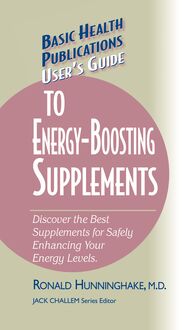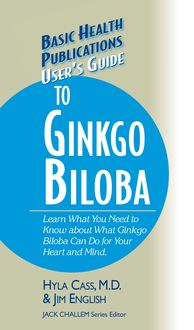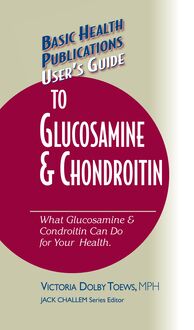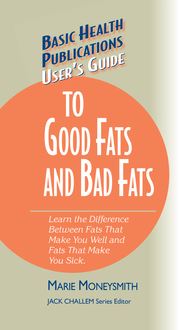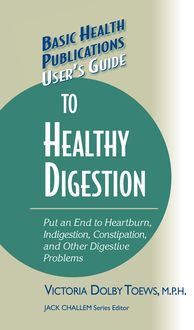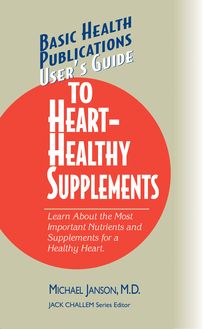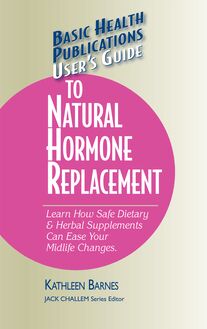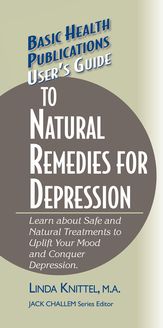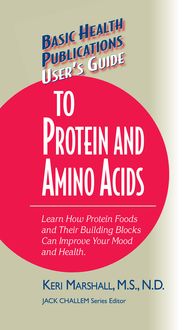-
 Univers
Univers
-
 Ebooks
Ebooks
-
 Livres audio
Livres audio
-
 Presse
Presse
-
 Podcasts
Podcasts
-
 BD
BD
-
 Documents
Documents
-
- Cours
- Révisions
- Ressources pédagogiques
- Sciences de l’éducation
- Manuels scolaires
- Langues
- Travaux de classe
- Annales de BEP
- Etudes supérieures
- Maternelle et primaire
- Fiches de lecture
- Orientation scolaire
- Méthodologie
- Corrigés de devoir
- Annales d’examens et concours
- Annales du bac
- Annales du brevet
- Rapports de stage
La lecture à portée de main
Vous pourrez modifier la taille du texte de cet ouvrage
Découvre YouScribe en t'inscrivant gratuitement
Je m'inscrisDécouvre YouScribe en t'inscrivant gratuitement
Je m'inscrisEn savoir plus
Vous pourrez modifier la taille du texte de cet ouvrage
En savoir plus

Description
Sujets
Informations
| Publié par | Turner Publishing Company |
| Date de parution | 15 mars 2005 |
| Nombre de lectures | 0 |
| EAN13 | 9781591206897 |
| Langue | English |
| Poids de l'ouvrage | 1 Mo |
Informations légales : prix de location à la page 0,0298€. Cette information est donnée uniquement à titre indicatif conformément à la législation en vigueur.
Extrait
The information contained in this book is based upon the research and personal and professional experiences of the author. It is not intended as a substitute for consulting with your physician or other healthcare provider. Any attempt to diagnose and treat an illness should be done under the direction of a healthcare professional.
The publisher does not advocate the use of any particular healthcare protocol but believes the information in this book should be available to the public. The publisher and author are not responsible for any adverse effects or consequences resulting from the use of the suggestions, preparations, or procedures discussed in this book. Should the reader have any questions concerning the appropriateness of any procedures or preparations mentioned, the author and the publisher strongly suggest consulting a professional healthcare advisor.
Series Editor: Jack Challem
Editor: Tara Durkin
Typesetter: Gary A. Rosenberg
Series Cover Designer: Mike Stromberg
Basic Health Publications User’s Guides are
published by Basic Health Publications, Inc.
28812 Top of the World Drive Laguna Beach, CA 92651
949-715-7327 • www.basichealthpub.com
Copyright © 2005 Richard A. Passwater, Ph.D.
ISBN: 978-1-59120-689-7
All rights reserved. No part of this publication may be reproduced, stored in a retrieval system, or transmitted, in any form or by any means, electronic, mechanical, photocopying, recording, or otherwise, without the prior written consent of the copyright owner.
Printed in the United States of America
10 9 8 7 6 5 4 3
Contents
Introduction
1. How Pycnogenol Works to Optimize Your Health
2. Understanding the Antioxidant Power of Pycnogenol
3. Healthy Aging
4. Protecting the Heart and Improving Circulation
5. Skin Care with Pycnogenol
6. Syndrome X and Diabetes
7. Allergies and Asthma
8. Arthritis and Lupus
9. Live Life to the Fullest
10. Sexual Function, Fertility, and Menstrual Disorders
11. Attention Deficit Disorders (ADD and ADHD)
12. How to Use Pycnogenol
Conclusion
Selected References
Other Resources
I NTRODUCTION
I f you could take a single natural product that would not only reduce your risk of heart disease and protect and improve your cardiovascular and circulation systems, but would also reduce inflammation, protect your skin against wrinkling, and reduce your risk of more than sixty diseases, would you take it? Of course you would. Any reasonable person would, provided he or she is aware of the product’s strong scientific background.
The one natural product that offers all of these benefits, and more, is a natural extract from the bark of French maritime pine trees. It’s called Pycnogenol (pronounced pick-nah-jeh-nol), and a growing body of scientific research and physicians’ experiences proves that it can have a profoundly important effect on your health. Clinical studies involving more than 3,000 people have confirmed what many people have known for some time: Pycnogenol works.
In this book, I will introduce you to the health benefits of Pycnogenol. I first learned about Pycnogenol in the late 1980s at a nutrition conference. Charles Haimoff, a German chemist who was the chief executive of Horphag Research Ltd., showed me the research his company had conducted up to that time and introduced me to several European professors at their University laboratories so that they might share their research with me. I became very interested and soon began my own research and writing about Pycnogenol. My first article appeared in 1991. I find that the body of science involving Pycnogenol grows so rapidly that I feel compelled to bring new information to the public on a regular basis so that they might benefit from the ongoing research.
CHAPTER 1
H OW P YCNOGENOL W ORKS TO O PTIMIZE Y OUR H EALTH
T he story of Pycnogenol goes back hundreds of years. Pycnogenol evolved from the pine bark and pine needle potion of Native North American medicine men. It was used to treat conditions now recognized as scurvy due to vitamin C deficiency, yet it is not a rich source of vitamin C itself. It is, however, a source of other nutrients, several of which recycle antioxidant nutrients such as vitamin C.
Antioxidants Antioxidants protect against the unwanted, disease-causing reactions of oxygen.
Scientific interest in this pine bark and pine needle tonic was stimulated by reports from Jacques Cartier’s French expedition to Canada in 1535 to find a northwest passage to China. During the winter, the frozen Hudson Bay caused the expedition to stop at the Native American villages of Stadacona and Hochelaga. Because the explorers had to spend the entire winter there, they exhausted their supply of fresh foods. They soon developed scurvy.
Scurvy had already killed twenty-five members of the expedition, and fifty more were seriously ill, by the time Cartier befriended a local Native American, Chief Domagaia. The chief prepared a decoction from what was described as a conifer believed to have been pine. The bark and needles were boiled to make a tea that was drunk several times a day. The men recovered within a week or two after beginning the treatment. They didn’t understand how the decoction worked at the time, but it was due to the fact that the pine needles supplied a small amount of vitamin C and the pine bark supplied vitamin C–enhancing bioflavonoids.
Scientists aware of the historical accounts of Cartier’s expedition became intrigued. They wanted to find out why a tree bark extract cured the explorers of scurvy.
Fruit acids Small organic acids found in foods, including various fruits, vegetables, nuts, seeds, and beans.
In 1970, with the advent of better analytical instruments and funding from Horphag Research Ltd., it was determined that pine bark extract was a defined mixture of fruit acids and procyanidins. In 1984, G. Pirasteh, Ph.D., and Peter Rohdewald, Ph.D., identified and quantified most of the ingredients.
Procyanidins (proanthocyanidins) A class of bioflavonoids. About 250 have been identified in nature. They are named after the blue hue they give to plants (“cyano” means dark blue).
Not only does Pycnogenol have a long and colorful history, it has proven its value over decades of commercial use with millions of consumers around the world. It has made a significant difference in the health of these people. Through the years, the commercial extraction process used to produce Pycnogenol has been patented, as have uses of Pycnogenol for several health conditions. These include the use of this unique extract as an antioxidant (U.S. Patent No. 4,698,360, granted on October 6, 1987), for improving blood circulation and reducing the risk of heart attacks by improving the condition of blood platelets (U.S. Patent No. 5,720,956, granted on February 24, 1998), for treating dysmenorrhea and endometriosis (U.S. Patent No. 6,372,266, granted on April 16, 2002), and for treating erectile dysfunction (impotence) (U.S. Patent No. 6,565,851, granted on May 20, 2003). There have been 140 articles about Pycnogenol published in the scientific and medical journals and more than 3,000 people have been the subjects of clinical studies.
Nutrient or Herb, or Both?
Some may consider Pycnogenol an herb and others may consider it a nutrient complex. Both are correct, but my more-than-fifteen-years experience with Pycnogenol research leads me to consider Pycnogenol primarily as a nutrient complex.
Before it was recognized that many of Pycnogenol’s health benefits were due to its unique complex of nutrient bioflavonoids, it was used more or less as an herbal remedy or over-the-counter treatment for hay fever and swelling of the ankles and legs. As more and more people used Pycnogenol for a single ailment, they soon recognized that it was also good for other purposes. It was later found to be a superantioxidant and nutrient.
Scientists and physicians continually learn of additional health benefits as more and more people use Pycnogenol. After the nutrient was introduced in Europe as a product to help nourish capillaries (small blood vessels) and skin—as suggested by the research on bioflavonoids by Nobel Laureate Dr. Albert Szent-Györgyi—European physicians discovered that Pycnogenol did much more. With use, it was discovered that Pycnogenol was also a natural cure for hay fever.
Bioflavonoids A class of thousands of beneficial compounds found in plants. They have a host of beneficial effects including being antioxidants.
Through the years, research has shown that Pycnogenol increases capillary resistance by protecting the major skin protein collagen and the ground substance between the cells. This was part of the explanation as to why a pine bark decoction used by Native North Americans cured scurvy. In scurvy, blood leaks out of the capillaries to virtually drown the victims in their own blood. Further research with Pycnogenol and capillaries confirmed that it improves microcirculation by both improving capillary strength and improving blood cell flexibility. Soon it was also learned that Pycnogenol improves skin by reducing the degradation of the skin proteins collagen and elastin.
It was not until 1987 that a patent was issued for Pycnogenol’s strong antioxidant effect that protects so well against harmful free radicals. Although Pycnogenol was available in Europe for many years, it was not introduced as a dietary supplement in the United States until 1987. At the beginning of the 1990s, the general population was beginning to learn of the health benefits of antioxidants. As more people learned of the antioxidant power of Pycnogenol, they also learned of its other health benefits. Slowly but surely, Pycnogenol’s benefits became known as one helped person told another, and today it is one of the most popular dietary supplements.
Researchers in the United States have become very interested in Pycnogenol. Beginning in 1995, U.S. scient
-
 Univers
Univers
-
 Ebooks
Ebooks
-
 Livres audio
Livres audio
-
 Presse
Presse
-
 Podcasts
Podcasts
-
 BD
BD
-
 Documents
Documents
-
Jeunesse
-
Littérature
-
Ressources professionnelles
-
Santé et bien-être
-
Savoirs
-
Education
-
Loisirs et hobbies
-
Art, musique et cinéma
-
Actualité et débat de société
-
Jeunesse
-
Littérature
-
Ressources professionnelles
-
Santé et bien-être
-
Savoirs
-
Education
-
Loisirs et hobbies
-
Art, musique et cinéma
-
Actualité et débat de société
-
Actualités
-
Lifestyle
-
Presse jeunesse
-
Presse professionnelle
-
Pratique
-
Presse sportive
-
Presse internationale
-
Culture & Médias
-
Action et Aventures
-
Science-fiction et Fantasy
-
Société
-
Jeunesse
-
Littérature
-
Ressources professionnelles
-
Santé et bien-être
-
Savoirs
-
Education
-
Loisirs et hobbies
-
Art, musique et cinéma
-
Actualité et débat de société
- Cours
- Révisions
- Ressources pédagogiques
- Sciences de l’éducation
- Manuels scolaires
- Langues
- Travaux de classe
- Annales de BEP
- Etudes supérieures
- Maternelle et primaire
- Fiches de lecture
- Orientation scolaire
- Méthodologie
- Corrigés de devoir
- Annales d’examens et concours
- Annales du bac
- Annales du brevet
- Rapports de stage



